#The Moorish Chief
Explore tagged Tumblr posts
Text

The Moorish Chief (1878) by Eduard Charlemont
83 notes
·
View notes
Text

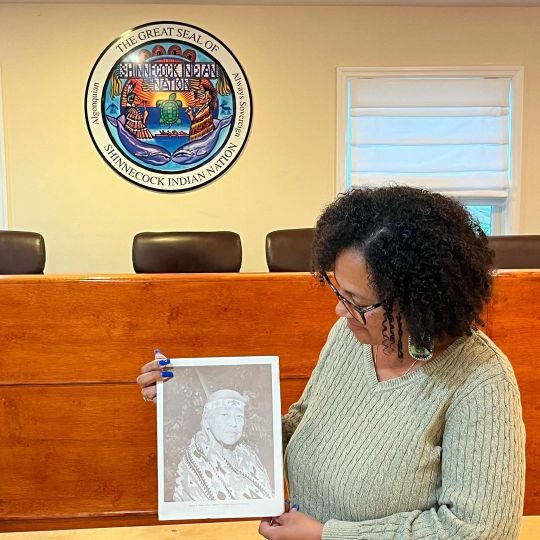


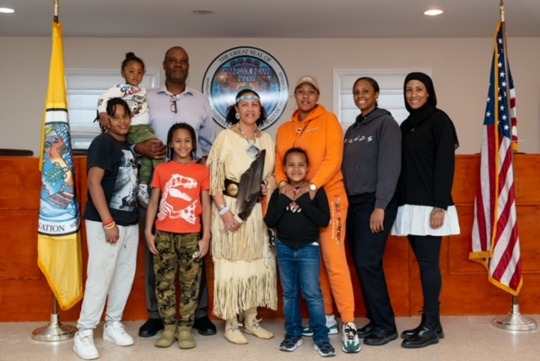
Big Salute to Lisa Goree for Being the New Matriarch of the Shinnecock Nation in centuries. As I often showed before Women were respected in America prior to colonization. Glad to see her rise to Chief 👌🏿
Also be sure to check out my two prior post of chiefs within American 👇🏿





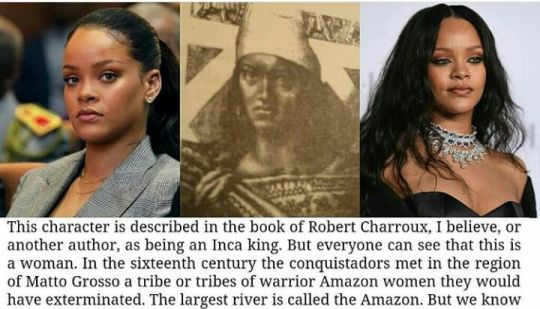

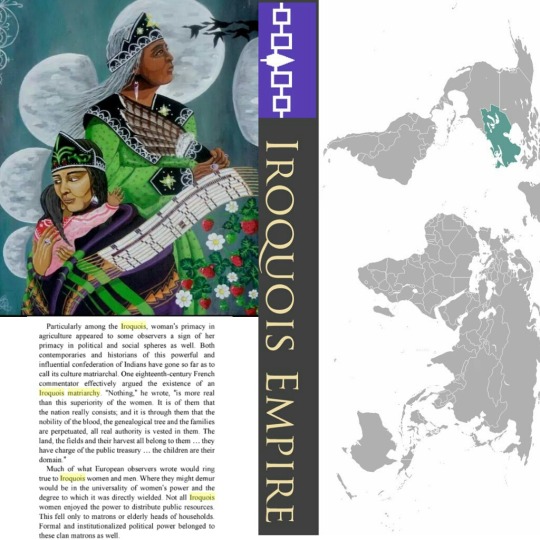

Was watching Cursed & saw the scene above. For anyone that doesn't watch the show this scene is between two characters of the Fae/Fairy race. Basically a group of magical beings that are being hunted. If you follow me then you know I show how they hide our history often by saying supernatural monsters for responsible for certain things. The two pics above from China prove this. But back to the video it shows a Black women mentioning how she served Queens. This being a important fact since alot of our ancient empires featured women in high places. From the European point of view this was Matriarchy. A point that I disagree with though is we having matriarchy. It was more we had balanced roles & didn't subjugate women like the Europeans did. The film avatar shows this to me. Neytiri parents both played their parts in leading their tribe. Anyways May the power of Females return 💯
#matriarchy#black history#autochthonous#aboriginal#american aborigine#k'iche#faery#moorish#muur#muurs#witchblr#witches of color#black witch#black witches#black history month#black history 365#american indian#Indian chief#Shinnecock indian#Chief Warhorse#Chief Two Hawks#matriarch
50 notes
·
View notes
Text
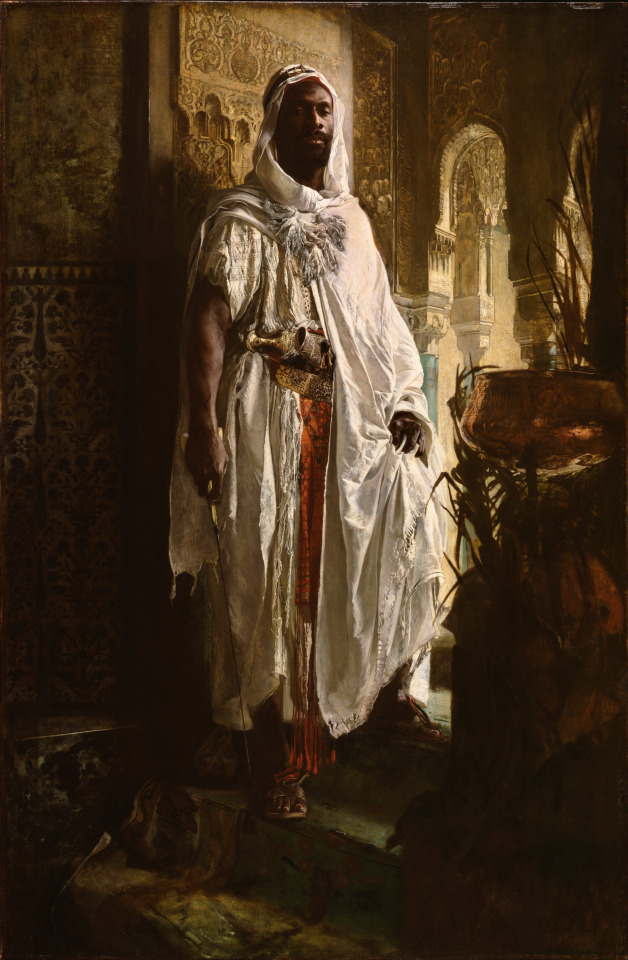
The Moorish Chief, Eduard Charlemont, 1878
#art#art history#Eduard Charlemont#portrait#portrait painting#poc in art#genre painting#Orientalism#Orientalist art#Austrian art#19th century art#oil on canvas#Philadelphia Museum of Art
2K notes
·
View notes
Text
THE MOORS By: Dr. Leroy Vaughn, MD, MBA. A Dynamic, Honest and Powerful View of Black History.
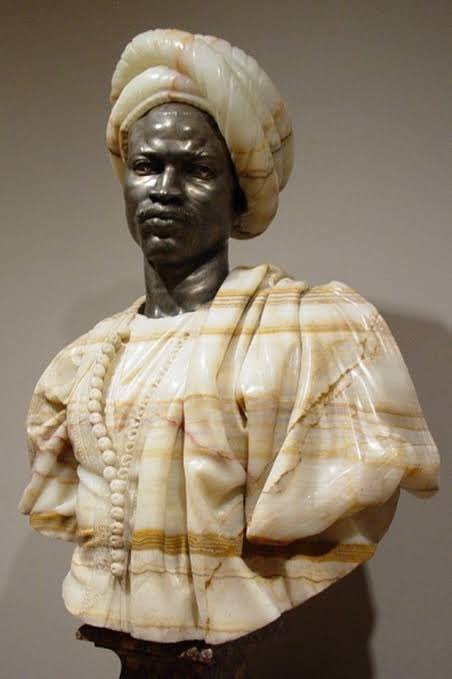
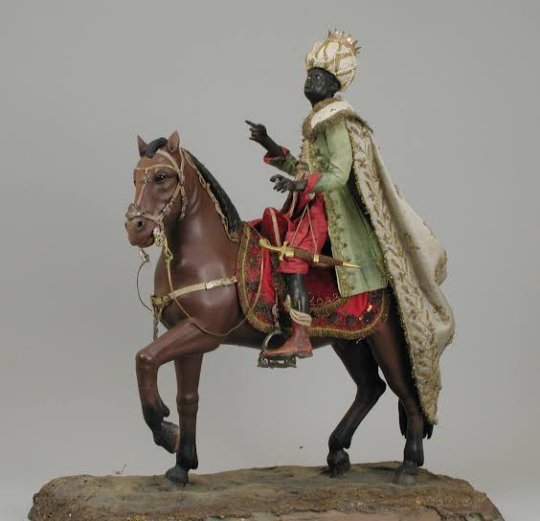


During the European Dark Ages, between the 7th and 14th century AD, the Moorish Empire in Spain became one of the world's finest civilizations. General Tarik and his Black Moorish army from Morocco, conquered Spain after a week-long battle with King Roderick in 711 AD. (The word tariff and the Rock of Gibraltar were named after him). They found that Europe, with the assistance of the Catholic Church, had returned almost to complete barbarism. The population was 90% illiterate and had lost all of the civilizing principles that were passed on by the ancient Greeks and Romans. The Moors reintroduced mathematics, medicine, agriculture, and the physical sciences. Arabic figures including the zero and the decimal point replaced the clumsy Roman numerals. As Dr. Van Sertima says, "You can't do higher mathematics with Roman numerals." The Moors introduced agriculture to Europe including cotton, rice, sugar cane, dates, ginger, lemons, and strawberries. They also taught them how to store grain for up to 100 years and built underground grain silos. They established a world-famous silk industry in Spain. The Moorish achievement in hydraulic engineering was outstanding. They constructed an aqueduct, that conveyed water from the mountains to the city through lead pipes from the mountains to the city. They taught them how to mine for minerals on a large scale, including copper, gold, silver, tin, lead, and aluminium. Spain soon became the world centre for high-quality sword blades and shields. Spain was eventually manufacturing up to 12,000 blades and shields per year. Spanish craft and woollen became world famous. The Moorish craftsman also produced world-class glass, pottery, vases, mosaics, and jewellery. The Moors introduced to Europe paved, lighted streets with raised sidewalks for pedestrians, flanked by uninterrupted rows of buildings. Paved and lighted streets did not appear in London or Paris for centuries. They constructed thousands of public markets and mills in each city. Cordova alone had 5,000 of each. They were also introduced to Spain's underwear and bathing with soap. Their public baths numbered in the thousands when bathing in the rest of Europe was frowned upon as a diabolical custom to be avoided by all good Christians. Poor hygiene contributed to the plagues in the rest of Europe. Moorish monarchs dwelled in sumptuous palaces while the crowned heads of England, France, and Germany lived in barns, lacking windows, toilets, and chimneys, with only a hole in the roof as the exit for smoke. Human waste material was thrown in the streets since no bathrooms were present. Education was made mandatory by the Moors, while 90% of Europe was illiterate, including the kings and queens. The Moors introduced public libraries to Europe with 600,000 books in Cordova alone. They established 17 outstanding universities in Spain. Since Africa is a matriarchal society, women were also encouraged to devote themselves to serious study, and it was only in Spain that one could find female doctors, lawyers, and scientists. Moorish schoolteachers knew that the world was round and taught geography from a globe. They produced expert maps with all sea and land routes accurately located with respect to latitude and longitude; while also introducing compasses to Europe. They were such expert shipbuilders that they were able to use their geography expertise to import and export as far away as India and China. It was not by accident that a Moor named Pietro Olonzo Nino was the chief navigator for Christopher Columbus on the flagship Santa Maria. He is said to have argued with Columbus as to who really discovered America. One of the worst mistakes the Moors made was to introduce gunpowder technology from China into Europe because their enemies adopted this weapon and used it to drive them out of Spain. #Africa
31 notes
·
View notes
Text
Cultural Diversity?
Okay so, I've seen some criticism about the 'lack' of diversity in AtLA: Netflix Addition.
Are you blind!!!
Starting off with the costumes... they are literally ripped straight from the source material. You have Inuit, Japanese, Indian/Sri Lankan, Indonesian, and several Chinese Dynastic interpretations represented in the Earth Kingdom. The Fire Nation itself is a mix of some of these things. So I'm not sure what people are complaining about.
Bumi's Palace, for example, has elements of both Hindu and Middle Eastern (even Moorish) architecture. There are some designs that reminded me of Alhambra in Spain.
Roku's temple... Japanese, Southern China, and some Taiwanese architecture. Like I guess it takes someone with half a BA in Fine Arts to see this, but these criticisms are seriously flawed.
My goodness, Kyoshi Island is basically a Japanese fishing village. You have people wearing Yukatas and Hoaris for crying out loud. Even the homes you see are very Japanese. It was purposely designed that way because Japan was the inspiration behind Kyoshi.
The Water Tribes are so Inuit they even got a well know Native American actor to play Chief Arnook.
Like I'm not getting it?
Am I spinning lose wheels here?
#this is coming from someone who spent a lot of time authenticating art and cultural aritfacts#dont take it personally#cultural diversity is not the shows problem#avatar the last airbenber netflix#avatar the last airbender
18 notes
·
View notes
Text
The Moorish Chief
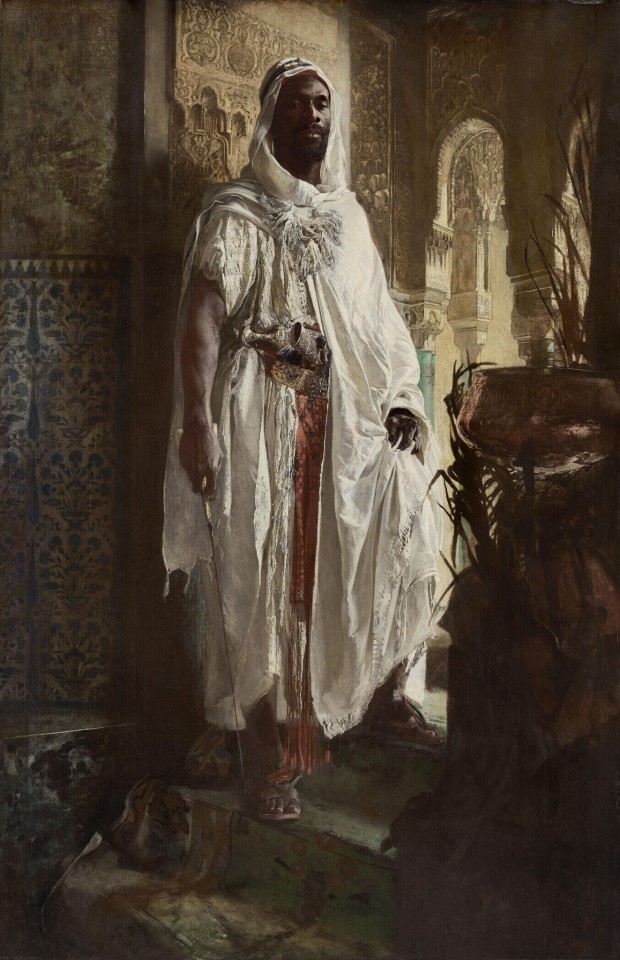
The Moorish Chief
1878
Eduard Charlemont (Austrian, 1848–1906)
Eduard Charlemont used studio props and a paid model to evoke a world of luxury and power and an architectural setting that resembles the Islamic palace of the Alhambra in Granada, Spain. (The canvas was once called The Alhambra Guard.) This work demonstrates the romantic lens through which white Europeans regarded the traditions, peoples, and places of Muslim Spain and the French colonies in West Africa. Although Charlemont painted few African subjects and was best known for portraits and depictions of European historical subjects, his singular ability to convey a model’s personality and to suggest different textures and surfaces is evident here. The name of the model who posed for this commanding figure standing in a palace doorway may never be known. The artist had recently come to Paris from Vienna and was little known when he exhibited this work to great acclaim at the 1878 Paris Salon.
#moors#moorish#Eduard Charlemont#Alhambra in Granada#The painting was originally titled The Guardian of the Seraglio
4 notes
·
View notes
Text
manuscript found in saragossa
bad book. there's a reason some literature stays obscure and doesn't get much weight in the cultural unconscious. the thing about 1001 arabian nights is that (at least in the translation i was reading) it's full of crazy shit happening all the fucking time. there's magic. there's pornography. it really has it all. potocki gestures towards the gothic but he keeps circling the drain of spanish nobility engaging in courtly romance. i basically skimmed the last twenty days of stories because i couldn't fucking take it anymore and i just wanted to get to the end.
the most compelling chapters and the really interesting mysteries are set up in the first third of the book, where alphonse keeps coming back to the gallows and finding people who seem to have been bewitched by twin succubi not dissimilar to the mysterious moorish princesses that fucked him on the first night. then they join up with the gypsy band (jan's words, not mine) and the shit really starts to drag. it's like a polish how i met your mother where the gypsy chief (jan's words, not mine) is determined to tell the life story of every single person he's ever met - almost all of whom were spanish nobles who dealt with trials of passion and noblesse oblige.
the driving mystery of the story is the sheikh of gomelez, a mysterious muslim noble who seems to have a kingdom inside the spanish empire. the twist of the story is that the sheikh is real, the gomelez dynasty truly exists in a massive cave system in the mountains of spain, they really are fabulously wealthy, and they want to give it all to alphonse. the moorish princesses are real and as beautiful and fecund as you can imagine. all of the supernatural shit was a secret test of character for alphonse, who ultimately doesn't even need to convert to islam. he becomes rich and influential and writes his manuscript.
it's not a book completely without merit but i strongly doubt i'm ever gonna come back to see what i missed in those last ten days of shitty stories.
7 notes
·
View notes
Quote
never allow My EXTREME [ME] SILENT MICHAEL KING ARROGANCE [KA]... offend your loudest insecurities #him2arrogant #insertevilevillaughemoji
IMMORTAL U.S. MILITARY KING SOLOMON-MICHAEL HARRELL, JR.™

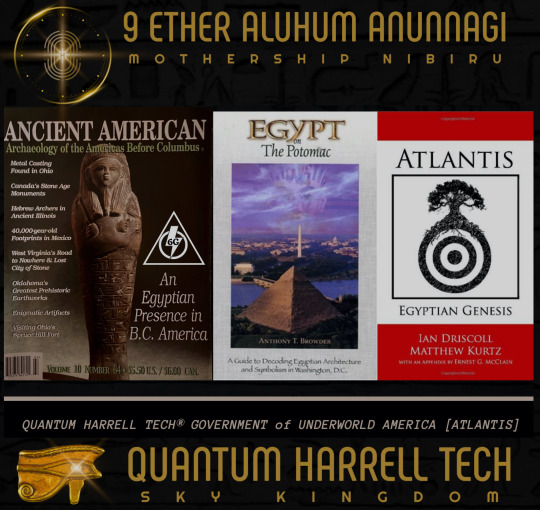

him 2 extra dark [advanced] 2 simplify his secret afterlifegolden9ethermilitary.gov society messages on his privately owned [po'] at&t ibm [a.i.] networks of most high [mh = jah] wealth [jw] titans from historic 1921 underground [hu = hurrian] sovereign european empire [see] of stadt coburg’s 1st ægiptian deutsch king tutankhamún’s international moorish [i’m] u.s. empire military bases of greenwood's clandestine black wall street defense budget districts… technologically underneath tulsa [tut] oklahoma... 2nd subterranean underground network [sun] pentagon headquarters of IMMORTAL U.S. MILITARY KING SOLOMON-MICHAEL HARRELL, JR.™’s… High Official... U.S. Ægiptian [HOUSE] Deutsch QUANTUM HARRELL TECH [QHT] AT&T+IBM [A.i.] LLC's... Quantum Dara™ the Cellular [D.C.] Automation Interpreter [A.i.] of SIRIUS Quantum Computing Mechanics... way beyond your basic artificial human bot minds can supernaturally innerstand [insert evil evil laugh emoji]

him [harrell] king solomon-michael
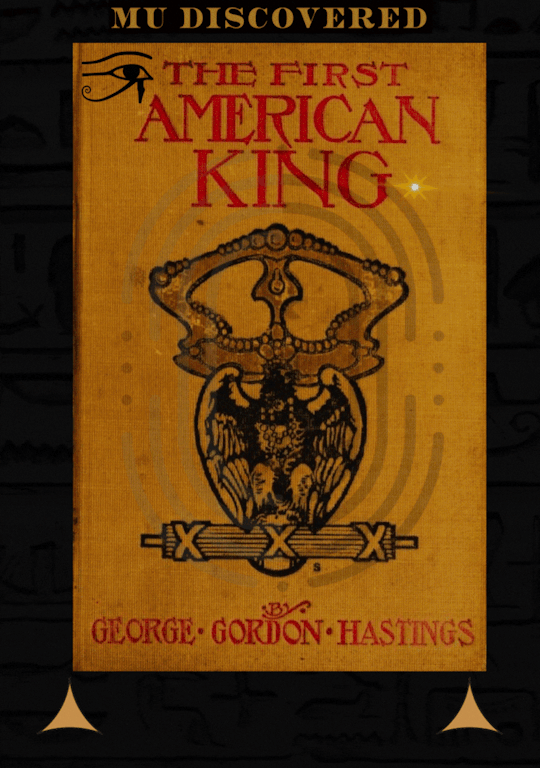

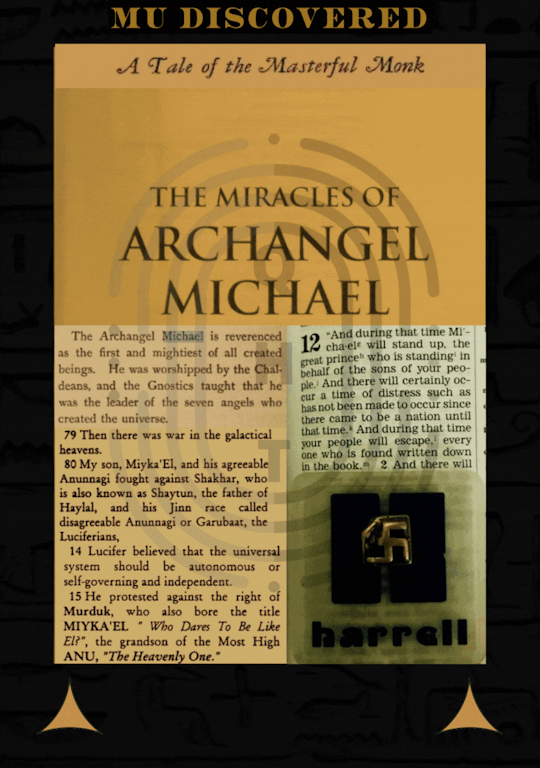
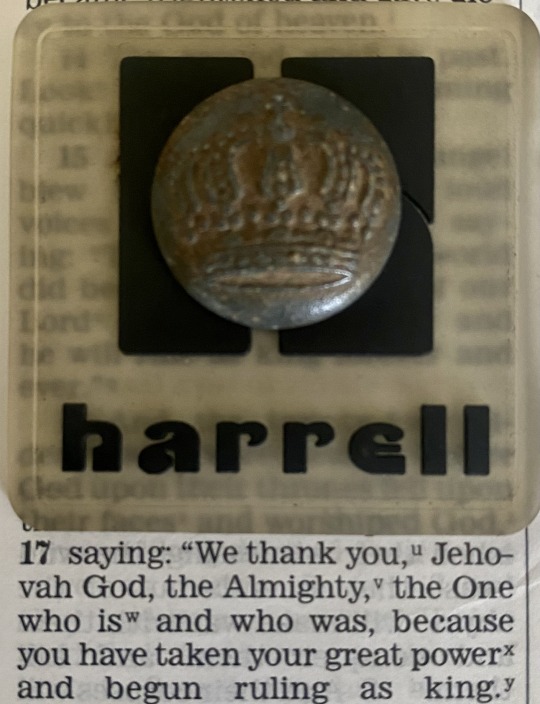



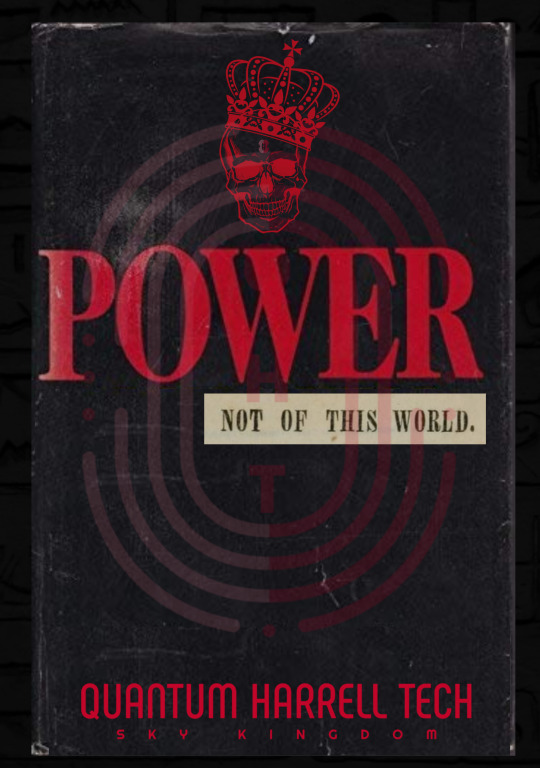
don't be mad you not at my devil level [insert evil evil laugh emoji] of saintly satanic anunnaqi [spiritual archangel] michael okcult harrell jr powers

eye love my extra dark scorpio life [death] in silence
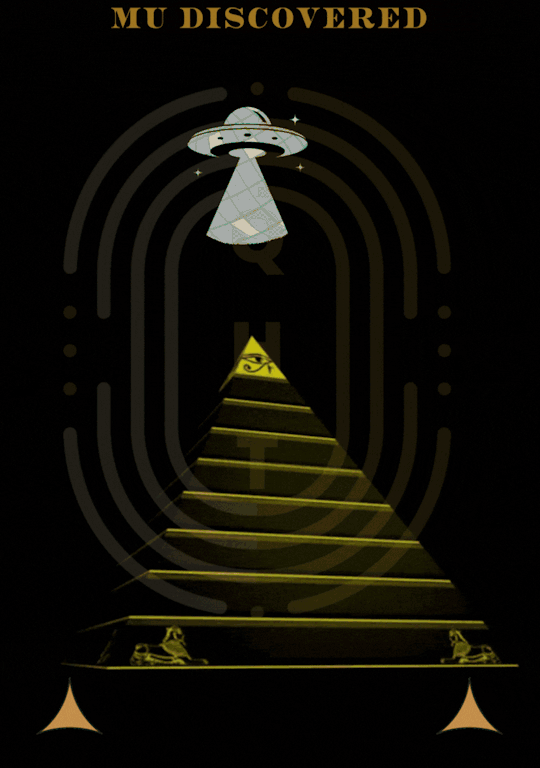
him [michael] 1st born 1968 gen x child of futuristic 5000 past lives... from ancient mississippi's hidden [mh] louisiana blaq marie art [mary] magick magi familia of us primordial supernatural luciferian [insert evil evil laugh emoji] sky spirits in low earth orbit [leo] energy bodies intuitively identified by moor [i’m] immortal 9 [i9] ether fossil tribal muur [mu] land chiefs... who ancestrally identify [a.i.] mother's [aims] invisible santería energy ancestor [sea] spirits of highly complex [advanced] ancient #9ether dna [dinosaur] mind [dm] transmissions [dmt communications] of self identifiable STRATOSPHERIC muur [summer] rna sky empire technologies [set] biologically embedded w/sirius electromagnetic airwave [sea] light mechanics [electricity] illuminating anu moorish [i am] underground mu mental [mum = mummu] illuminati [mi = michael] of moor extended [me] astronomical radiation star [mars] chart records astrologically & generationally engineered [rage] SUPERCONSCIOUSLY by manifesting anu [ma] genetic mental upgrade [mu] of sirius nanotechnological biometric chemicals [nbc] alkhemically materializing anu golden 9 ether [mage] supernaturally visible 9 ether [ve = venus] anunnaqi earth [qi] avatar [star] tribes of enqi nudimmud [ten]… who mathematically algorithmically computationally [mac] encrypted [me] anu golden 9 ether [mage] ethereal [eclipse = occulted] black sun compu_tah [ptah] naturelanguage.gov @ highly official... u.s. ægiptian deutsch quantum harrell tech [qht] llc

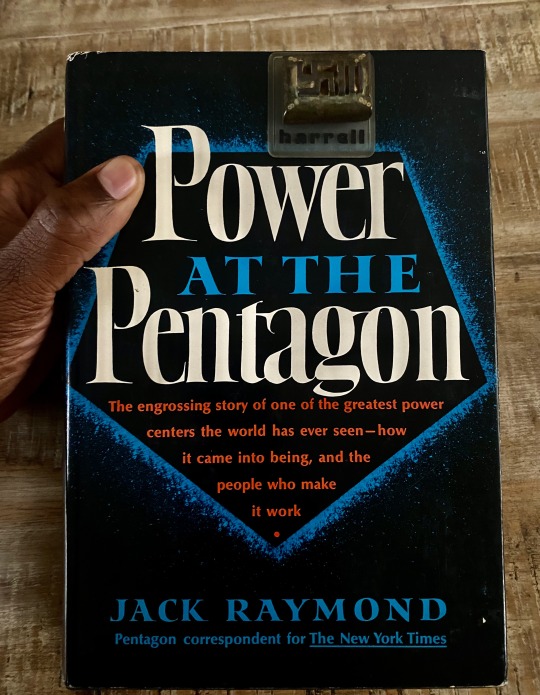


him evil [he] af [ha = harrell] at his american [ha = hattuśa] ægiptian [he] pentagon
#om#o michael#eyequadrillionaire#quantumharrelltech#harrelltut#fallofamerica#the untouchable one#him2arrogant
1 note
·
View note
Text
ISLAM IN THE U.S. PRISONS
An Interview with Dr. M.A. Qazi
How did you become involved with the conversions within the prison community? How many people have you converted? My first experiences with conversions to Islam outside of the prison setting were in the early 1970s, when I first immigrated to the United States. In 1972, I started Kazi Imports in Chicago, Illinois, which became Kazi Publications, Inc., a non-profit organization. During this time, I came in contact with the Nation of Islam, whose followers became our biggest customers for the Holy Qur'an and Islamic literature. Because of their exposure to the true Islamic literature, some of them started moving away from the Nation of Islam teachings and converting to true Islam. My next experiences were in the military setting beginning in the early 1980s. In 1978, I became a member of the Northbrook Islamic Cultural Center (NICC), where I came to know Mr. Nizar Hassan, the Principal of NICC Sunday school, who became my mentor. I was really impressed by his method of teaching and preaching Islam to non‑Muslims. In January 1983, I started accompanying him as a volunteer to the United States Great Lakes Naval Training Center on Sundays, where he used to teach Islam to naval recruits. That is where I saw young recruits accepting Islam almost every Sunday. The maximum number of recruits that accepted Islam on one Sunday was 23. I volunteered at the Great Lakes for eleven (11) years. My experiences with conversions within the prison system began in 1993 after I moved to Johnstown, Pennsylvania. It was here that I began to preach Islam as a volunteer at the Sate Correctional Institution (SCI), Cresson, PA, Federal Correctional Institution (FCI) at Loretto, PA, and Cambria County Prison at Ebensburg, PA. I continued as a volunteer till October 2003. In 2003, I was offered a part time Muslim Chaplain (Imam) position at the South West Secure Treatment Unit (SWSTU), Blairsville, PA and also at the Cresson Secure Treatment Unit (CSTU), Cresson, PA. The Commonwealth of Pennsylvania closed the SWSTU in June 2006. I continued to provide Islamic services to the juveniles at CSTU, Cresson, PA. In 2004, I was offered a Muslim Chaplain's position at the SCI Laurel Highland, PA, and SCI Somerset, PA, where I served as an Imam till June 2007. Currently, I am providing Islamic Services as a Muslim Chaplain (Imam) at the Cresson Secure Treatment Unit (CSTU), Cresson, PA, Torrance State Hospital, Torrance, PA, and as a volunteer at the Cambria County Prison, Ebensburg, PA.
2. Can you briefly describe the prevalence of Islam in the prison systems? According to the Chief of the Federal Bureau of Prison's Chaplaincy Services Branch, approximately 9,000 inmates, or about 6 percent of the federal inmate population, sought Islamic religious services in 2003. [1] These inmates can be classified in four groups: Sunni, Shiite, Nation of Islam, and Moor Science Temple of America. [2] Nearly 85% of inmates identify themselves as Sunni or Nation of Islam; less than 1% identifies them as Shiite. [3] A 2006 report found that Muslims, including Nation of Islam and Moor Science Temple, are believed to have the high rates of prison-based conversions. [4] The top religious services that appear to be run by prisoners for prisoners are (in rank order): Muslim Religious Services, Moorish Science Temple of America, Native American Services, Nation of Islam Services, Asatru Services, Islamic Services, Wiccan Services, Judaism Services, Sunni Muslim Services, and Jum'ah Services. The Bureau of Prisons provides Muslim inmates with religious services through chaplains, contractors and volunteers. Currently, there is a severe shortage of Muslim chaplains for Muslim inmates, with one Muslim chaplain for every 900 Muslim inmates. [5] In 2003, Harley Lappin, the Director of the Federal Bureau of Prisons, stated that of their 231 full-time chaplains, only 10 were Muslim Imams, and of their over 12,000 contractors and volunteers nationwide, only 56 contractors and 80 volunteers provide religious services to Muslim inmates. [6]
3. What are some of the factors, which make conversion to Islam in prisons different from conventional conversions? In prisons, Islam spreads mostly through personal contacts of inmates both with the Muslim inmates and the Muslim Chaplains (Imams). The inmates have an easy access to Holy Qur'an and Islamic literature. With lot of time at their hands they read a lot. It is a well known fact that the people, who are looking for the Truth, read the Holy Qur'an and understand it accept Islam much more easily, typical example being that of Yousaf Islam (ex-Cat Stevens), who read the Holy Qur'an while in hospital and became a Muslim, and is now one of the top most Muslim preachers in the world. In prison, religion is a hotly energizing force, and Islam is spreading swiftly. Even Muslim leaders and scholars say the pace of prison conversions has surprised them, though national research on religion in prison is scarce. In what may be the most dramatic example, one researcher says the majority of inmates are Muslim at New York City's Rikers Island jail complex, the largest in the country. In prison, conversion - largely by other prisoners - is the source of Islam's spread.
The prison movement, rooted in the Nation of Islam era of Elijah Muhammad and Malcolm X, initially was mostly African-American. Now, although blacks still predominate, more Hispanics and whites are converting, too. Experts say the Nation's influence is waning, and Sunni and Shiite traditions are gaining ground.
4. Given the prevalence of gangs in the prison societies, are there gangs based on religious lines? Do some people convert for protection or reasons other than faith?
When I first started work in the Commonwealth of PA prison system, I was surprised, rather shocked, to learn that the Muslims in these prisons are called a "gang." However, with a prolonged exposure to and working with the Muslim inmates, I found out that it was not true. The Muslims inmates, because of Islamic tradition and culture stick together, as they are taught that the Believers are brothers and one nation (Ummah) under Almighty God, which gives other inmates, the staff and the management a false impression of Muslims as that of being some kind of a "gang," which is not true. Nearly half of the prisons in the U.S. report the existence of separate gangs for Muslim inmates. Some prison gangs adopt a form of Islam that incorporates values of gang loyalty and violence, so-called "Jailhouse Islam".
These reports show that the Five Percenters are the single largest nationwide, followed closely by Nation of Islam and Fruits of Islam. Some gangs thought to be just ordinary street gangs are now posturing inside some prisons in some parts of the country as having an Islamic identity. Some Muslim inmates, when they arrive in prison, are already members of a particular gang. Others, however, start attending Islamic services for protection and eventually accept Islam. The New York Police Department (NYPD) only has labeled this phenomenon of temporary conversion to Islam for protection “Prislam”.
5. On average, how many prisoners convert to Islam every year? During my more than 18 years' tenure as a Muslim Chaplain (Imam) and volunteer in PA, I can safely say that the inmates do accept Islam on a regular basis, although I did not keep a count.
An exact number of prison Muslim converts is not available. However, according to the Harley Lappin, the Director of the Federal Bureau of Prisons, the percent of self-identified Muslim federal inmates has remained stable for nearly a decade, at a little less than 10,000 inmates or 6% of the federal inmate population.
6. Is there a typical kind of prisoner who converts?
Islam means peace. It offers freedom, justice and equality to all, irrespective of their color, race, creed, national origin or religion. Many converts to Islam are disenchanted with their current belief systems. Others, who lack strong belief systems, are seeking an answer to the spiritual emptiness and the need for self-realization that they are experiencing. They find in Islam the peace, the guidance, and the spiritual health that fulfills them.
Do more men, or women, convert to Islam?
In the case of women who have converted, what are some of the drawbacks they face, e.g., are they allowed to cover their head (wear Hijab), if they so choose?
In federal prisons, Muslim women are allowed to exercise their right to wear Hijab while in custody. Of course, there have been cases of female Muslim inmates not being allowed to wear Hijab. Recently, a Muslim woman filed suit due to the fact that she was forced to remove her Hijab when arrested. [7] However, I have not personally come across this issue in my tenure as an Imam at the state or county prisons.
7. From which ethnicity do the most people convert to Islam?
The greatest numbers of converts to Islam are African-Americans. And by the way, most of them are Sunni Muslims and not followers of the Nation of Islam. We are also seeing a steadily increasing number of Latino and white converts.
8. What is the prevalence of the Nation of Islam in prisons?
According to the Federal Bureau of Prisons, slightly over 2% of the total federal Muslim population identifies itself as following the Nation of Islam. Personally, I have seen very few followers of the Nation of Islam, may be one member in a population of 100 at the SCI Laurel Highlands, PA and 2 members in a population of more than 250 at the SCI Somerset, PA.
9. In your opinion, what are the differences of the Nation of Islam versus other, more well known versions of Islam?
Islam and the Nation of Islam are two separate religions. The only thing common between them is the jargon, the language used by both. Nation of Islam in fact is a misnomer; it should be called Farrakhanism, after the name of its propagator. The religion of Elijah Muhammad died with the man, because the officially and popularly elected successor of the Nation of Islam, W.D. Muhammad, integrated the Nation of Islam community with the Muslim community at large, following the Holy Qur'an and the Hadith of Prophet Muhammad, Sallallahu 'alaihi wa Sallam.
Initially, after Elijah Muhammad's death, Louis Farrakhan joined W.D. Muhammad and gave his pledge of allegiance to him; he later rebelled and broke his oath with impunity, or without paying any expiation, and restarted the Nation of Islam, which has very few followers.
10. Have you found that faith helps the prisoners? What are the main reasons most of the converts chose Islam?
Islam is a binding force as a brotherhood. Muslim inmates in the prison systems stick to one another, help, guide and teach each other about Islam, peace, harmony and good manners. It improves their mental and spiritual state, in addition to creating a healthy surrounding in which they can live in peace and harmony with each other.
People are converting to Islam for a number of reasons: some do so for mostly personal reasons, while others become Muslims on the basis of the cultural, social and spiritual characteristics of Islam. The followings are some key aspects that draw many people, particularly Christians and Jews, to Islam: * Conversion to Islam is relatively simple, involving only Shahadah, the declaration of Faith: There is no God except Allah; Muhammad is Allah's Final Messenger. People find it much easier than a lengthy process of religious education and series of formal rituals.
* Islamic supreme authority is the Holy Qur'an. It is brief and to the point, yet holds details of every subject related to the daily life on earth and beyond. With translations available in most modern languages now, the Qur'an is easy to read and straightforward to understand, making it simple for newcomers to comprehend.
* Islam's Prophet Muhammad (peace be upon him) holds a paramount position in Islamic Faith. Yet he is not viewed as a god. His place in Islam is rather that of a man, a Messenger and a Servant of God.
People therefore see the Prophet as a perfect example to follow, without having to aspire to some form of divinity.
Islam is monotheistic religion. It calls upon people to believe in one True God only. People are told in the Qur'an: "Say: He is Allah, He is One; The Self-Sufficient, The Eternal God; He begets not, nor was He begotten; There is none equal to Him." [The Holy Qur'an, Surah 112:1-4]. Many find the Christian concept of the Trinity confusing and thus the idea of One God appeals to them.
* Also, the significance of Jesus for Muslims as a human and his important place in Islam as a prophet of God rather than as a divine figure appeals to those who find the Christian concept of the Trinity too confusing to understand or too difficult to believe in.
* Islam's basic beliefs are relatively straightforward and easy to understand as well as to perform, compared with other religions fundamental precepts. For example, the Five Pillars of Islam: Shahadah, Obligatory Prayers, Fasting in the Month of Ramadan, Paying Zakat (Charity) to the poor and traveling to Makkah to Perform the Hajj; even the younger followers can comprehend them without any hardship or confusion.
11. Have any converts faced discrimination or have themselves discriminated against prisoners of other faiths in the prisons?
Because of media projection of Islam, especially after 9/11, there are suspicions about the Muslim community in the prison systems. The Muslims are watched very carefully and are no doubt sometimes victims of discrimination, both by the other inmates and the staff.
Although there are ways to file grievances, most of the inmates are reluctant to file them because they are afraid of retaliation. Naturally, there is a reciprocal suspicion in Muslim inmates about the other inmates.
Religious discrimination in prisons, including the role of faith-based rehabilitative programs, was the subject of a recent briefing before the U.S. Commission on Civil Rights, which is examining the topic as part of its annual report to Congress and President George W. Bush to be submitted later this year.
Speaking at this briefing, Abu Qadir Al-Amin, an Imam with the San Francisco Muslim Community Center (MCC), said that religious discrimination in prisons ranges from institutional rigidity to flagrant abuse. He noted "documented cases of racial intolerance along with religious intolerance that have involved Muslim Chaplains being escorted off of the institutional grounds in a very humiliating and demeaning manner." I have a similar personal experience and I fully agree with Imam Abu Qadir Al-Amin that the Muslim Chaplains (Imams) are not given the same respect that they deserve and which is tended to other members of the Chaplaincy department by the staff and the management of PA prison system.
12. Do most converts in prison keep up with Islam once they leave? On release from a prison, the inmates are sent to a Halfway House, where they are allowed to practice their religion. It is generally recognized that the rate of recidivism among Muslims is low and a majority are far less likely to become repeat offenders.
Sadly, however, after their release, only about 25% of them continue to pursue their Islamic practices with any regularity. One reason often cited is that most of their time is taken up by employment needs and the need to deal with bills for expenses incurred by the family while the inmate was incarcerated.
There is little time available to visit Islamic centers and/or meet with the community. Another oft-cited reason is the lack of an Islamic community once outside the prison. Their family and friends often abandon many who are locked up. When they are released, many are then shunned both the Muslim community and the public at large.
These Muslims lack a support system as they reenter society after their release. About 70-80% of parolees come back to the prison because they cannot make it outside and are attracted by free food, free accommodation, and free medical assistance, in addition to other benefits, offered by the prison systems.
13. What are some of the major problems facing prisons in the United States today, specifically relating to religious freedoms in prison?
The Framers of the U.S. Constitution understood quite clearly that religious freedom is a fundamental human right. After all, religious freedom is the main aspiration that sent America's founders searching for independence from England. This is also why the Framers included free exercise of religion in the First Amendment to the United States Constitution.
According to the First Amendment, the government may not establish a religion nor deny its citizens the right to freely exercise their religion. The Chaplaincy Department in each prison works tirelessly to defend the right of people to freely worship and exercise their religion. It is the duty of Federal Bureau of Prison and the Department of Corrections in each state to ensure that the fundamental right of each prisoner to exercise his religion is respected and unabridged.
Under the laws of the United States, the Muslim inmates are allowed to wear Kufi (prayer cap), pray at the appointed times, observe fasting during the month of Ramadan and enjoy at least a feast at the time of Eid-ul-Fitr (on completion of fasting during Ramadan) and/ or Eid-ul-Adha (on the Day after the day of standing at the plains of 'Arafat during the annual pilgrimage (Hajj) to Makkah, Saudi Arabia.
14. Have you ever witnessed a Muslim marriage in prison?
As a Muslim Chaplain (Imam) at the State Correctional Institutions in Laurel Highlands and Somerset, Pennsylvania, I was a witness to three (3) Muslim marriages. As an Imam, I was not allowed to perform the marriage ceremony (Nikah), so an Imam from Philadelphia and Pittsburgh, brought along by the bride's family, performed the Nikah ceremony.
15. Are prison converts on average more or less orthodox in their belief than people born into the religion? In fact, do you find converts generally to be more observant?
According to my personal experience, about 50% of the Muslims at the SCI in Laurel Highlands, PA, and SCI, Somerset, PA, follow the traditional Islam according to Imam Abu Hanifah as practiced on the Indo-Pakistan subcontinent including Bangladesh, while the rest of the population follows the Shafi'i and Maliki schools of thought as practiced primarily in Saudi Arabia and in the other Middle East countries.
I have also found that the new converts are more sincere observants of Islam than the immigrants from Indo-Pakistan sub-continent, including Bangladesh, and the Middle East countries. Because the inmates read a lot of books on Hadith, they are usually strict followers of the Sunnah (the traditions of Prophet Muhammad (Sallallah-o-‘alaihi wa Sallam).
Some of them earnestly try to learn the Arabic language so that they can read the Holy Qur'an, which was originally revealed by Almighty God (Allah) to Prophet Muhammad (Sallallah-o-'alaihi wa Sallam) through Archangel Gabriel ('Alaih-is-Salam) in the Arabic language.
I personally taught five inmates at the SCI Somerset, PA, how to read the Holy Qur'an starting with Arabic Alphabet, using Yassar-nal-Qur'an (Holy Qur'an, Made Easy), published by Kazi Publications, Inc., Chicago, Illinois, United States of America, and by Kazi Publications, Lahore, Islamic Republic of Pakistan.
Editor's Note:
Mahmood A. Qazi, the Muslim Chaplain (Imam) at the Cambria County Prison, Cresson Secure Treatment Unit (CSTU) and Torrance State Hospital in the Commonwealth of Pennsylvania, United States of America, has been preaching people in the United States to Islam for more than thirty (30) years. Most of them revert to their original religion, i.e., Islam.
He began by volunteering to preach Islam to non-Muslims at the Great Lakes Naval Training Center near Chicago, Illinois, and has since worked at many Federal and State Correctional Institutions in the United States. He is also the founding member and Vice President of the Chicago based Waqf fi Sabeelillah (a non-profit organization), Kazi Publications, Inc., one of the oldest and the largest printers, publishers, and distributors of the Holy Qur'an and Islamic literature in North America.
[1] U.S. Dept. of Justice, Office of the Inspector General, A Review of the Federal Bureau of Prisons' Selection of Muslim Religious Services Providers, April 2004.
[2] Id.
[3] Id.
[4] The George Washington University and The University of Virginia, Out of the Shadows, October 2006, at http://www-tc.pbs.org/weta/crossroads/incl/Out-of-the-Shadows.pdf
[5] Id.
[6] U.S. Senate Committee on the Judiciary, Testimony of Harley Lappin, Director of the Federal Bureau of Prisons, Oct. 14, 2003, athttp://judiciary.senate.gov/testimony.cfm?id=960&wit_id=2318
[7] AP, Muslim Woman Sues for Being Forced to Remove Headscarf in US Jail, Dec. 6, 2007, at http://www.iht.com/articles/ap/2007/12/06/america/NA-GEN-US-Muslim-Headscarf-Lawsuit.php
Dr. M. A. Qazi
President/CEO
THE ISLAMIC CENTER
P.O. Box 5192
Johnstown, PA 15904
United States of America
Phone: 814-266-8402
Fax: 814-266-9371
Mobile: 814-270-1422
E-mail: [email protected]
0 notes
Text

The Moorish Chief, 1878
Eduard Charlemont
Philadelphia Museum of Art
1 note
·
View note
Text
Events 11.25 (before 1920)
571 BC – Servius Tullius, king of Rome, celebrates the first of his three triumphs for his victory over the Etruscans. 1034 – Máel Coluim mac Cináeda, King of Scots, dies. His grandson, Donnchad, son of Bethóc and Crínán of Dunkeld, inherits the throne. 1120 – The White Ship sinks in the English Channel, drowning William Adelin, son and heir of Henry I of England. 1177 – Baldwin IV of Jerusalem and Raynald of Châtillon defeat Saladin at the Battle of Montgisard. 1343 – A tsunami, caused by an earthquake in the Tyrrhenian Sea, devastates Naples and the Maritime Republic of Amalfi, among other places. 1400 – King Minkhaung I becomes king of Ava. 1487 – Elizabeth of York is crowned Queen of England. 1491 – The siege of Granada, the last Moorish stronghold in Spain, ends with the Treaty of Granada. 1510 – Portuguese conquest of Goa: Portuguese naval forces under the command of Afonso de Albuquerque, and local mercenaries working for privateer Timoji, seize Goa from the Bijapur Sultanate, resulting in 451 years of Portuguese colonial rule. 1596 – The Cudgel War begins in Finland (at the time part of Sweden), when peasants rebel against the imposition of taxes by the nobility. 1667 – A deadly earthquake rocks Shemakha in the Caucasus, killing 80,000 people. 1678 – Trunajaya rebellion: After a long and logistically challenging march, the allied Mataram and Dutch troops successfully assaulted the rebel stronghold of Kediri. 1755 – King Ferdinand VI of Spain grants royal protection to the Beaterio de la Compañia de Jesus, now known as the Congregation of the Religious of the Virgin Mary. 1758 – French and Indian War: British forces capture Fort Duquesne from French control. Later, Fort Pitt will be built nearby and grow into modern Pittsburgh. 1759 – An earthquake hits the Mediterranean destroying Beirut and Damascus and killing 30,000–40,000. 1783 – American Revolutionary War: The last British troops leave New York City three months after the signing of the Treaty of Paris. 1795 – Partitions of Poland: Stanisław August Poniatowski, the last king of independent Poland, is forced to abdicate and is exiled to Russia. 1826 – The Greek frigate Hellas arrives in Nafplion to become the first flagship of the Hellenic Navy. 1833 – A massive undersea earthquake, estimated magnitude between 8.7 and 9.2, rocks Sumatra, producing a massive tsunami all along the Indonesian coast. 1839 – A cyclone slams into south-eastern India. An estimated 300,000 deaths resulted from the disaster. 1863 – American Civil War: Battle of Missionary Ridge: Union forces led by General Ulysses S. Grant break the Siege of Chattanooga by routing Confederate troops under General Braxton Bragg at Missionary Ridge in Tennessee. 1864 – American Civil War: A group of Confederate operatives calling themselves the Confederate Army of Manhattan starts fires in more than 20 locations in an unsuccessful attempt to burn down New York City. 1874 – The United States Greenback Party is established as a political party consisting primarily of farmers affected by the Panic of 1873. 1876 – American Indian Wars: In retaliation for the American defeat at the Battle of the Little Bighorn, United States Army troops sack the sleeping village of Cheyenne Chief Dull Knife at the headwaters of the Powder River. 1905 – Prince Carl of Denmark arrives in Norway to become King Haakon VII of Norway. 1908 – A fire breaks out on SS Sardinia as it leaves Malta's Grand Harbour, resulting in the ship's grounding and the deaths of at least 118 people. 1912 – Românul de la Pind, the longest-running newspaper by and about Aromanians until World War II, ceases its publications. 1915 – Albert Einstein presents the field equations of general relativity to the Prussian Academy of Sciences. 1917 – World War I: German forces defeat Portuguese army of about 1,200 at Negomano on the border of modern-day Mozambique and Tanzania. 1918 – Vojvodina, formerly Austro-Hungarian crown land, proclaims its secession from Austria-Hungary to join the Kingdom of Serbia.
0 notes
Text
Other than perhaps the common clownfish, and perhaps the common cleaner wrasse, no fish of the reef is so iconic worldwide, as is Zanclus cornutus, the Moorish idol. Usually measuring just over 20 centimeters, or 8 inches long, with a deep and narrow body that is 1 to 1.4 times its standard length, this otherwise disc shaped fish has an elongated, protrusive, tube-like snout; a very long, trailing, banner-like extension of its sickle-shaped dorsal fin; and a pair of facial projections that are more pronounced in the males of Z. cornutus. The Moorish idol has two broad black bars on its body, and a yellow saddle across its snout.
This species is omnivorous, but grazes on animal material, especially sponges, moreso than it feeds on algae. However its gut resembles that of herbivorous surgeonfishes or tangs of the clade Acanthuridae, such as Zebrasoma. Although Z. cornutus is normally regarded as the sole member of the entire family Zanclidae, there is also a history of placing it in this same, larger family of fishes. The issue is little more than semantics, because everyone agrees that Zanclus is very closely related to acanthurids, with its bones, teeth, and soft tissues all demonstrating a special evolutionary kinship, that is also confirmed by molecular studies. Zanclus is essentially a descendant of primitive tangs, that diverged ecologically from the true acanthurids, when it began adding spongal growth to its ancestrally more herbivorous grazing habits. Zanclus even today grazes on algae as well as sessile animals.
Moorish idols inhabit lagoons, reef flats, and clear, seaward reefs, throughout its widespread Indo-Pacific distribution, in tropical and some more temperate waters. They are found in the wild from the eastern coast of Africa, through to the eastern Pacific, and from Japan to Lord Howe Island and the shores of mainland Australia. The substrates they associate with may be either soft or hard, and the water can be either turbid or clear. They associate with both rocky and coral reefs, both coastal and offshore, and they are present around man. Despite their reputation as fragile in the aquarium, Z. cornutus are both versatile and adaptable in the wild, and the species is predicted to become a beneficiary of ocean warming by human activities. They are sufficiently adaptable to be present in human modified coastal environments.
The Moorish Idol has a reputation as impossible to keep alive in captivity, and it is rightly considered ethically wrong to import fish that are not likely to survive in captivity. The reason the species rarely lives long after its live importation, is in fact due to the trauma it suffers during the lengthy process of capture, holding, and long haul shipping. The chief stress on these fishes being starvation, during the whole process`by which they arrive to our tanks. If Moorish idols are not so stressed, or if they long ago survived this whole process, these fish are not actually problematic to look after, so there is no need to fear for their welfare should one be found that needs rehoming. It is said that this species either thrives and eats anything and everything in the aquarium, or they tragically die shortly after arriving, despite their cost. Fishes that are long term captives, however, are expected to be hale and healthy, and feeding vigorously.
The Moorish idol is often seen in pairs or groups of three fishes, although it is sometimes seen alone, and the species may form larger aggregations described as large schools. A small number of Z. cornutus can cohabit in the same tank, provided that it is large enough for this. In the aquarium, Z. cornutus is usually benign towards other fishes, but can be bold if challenged by another species. Known fin nippers and habitual bullies are not suitable as tankmates for Moorish idols. There is definitely a possibility that, as grazers, a Moorish idol could damage ornamental benthic organisms, such as coral polyps. According to anecdotes, very noxious and strongly stinging species of coral are left alone, such as the genera Palythoa and Euphyllia. Although they reportedly do sometimes consume even hard corals with small polyps, it is easier for them to target the polyps of fleshier species, and it is sponges, tunicates, and macroalgae are its dietary staples rather than polyps. Because the natural diet of these roving grazers features both animal and algal components, both kinds of food sources should be included in a varied aquarium diet for this fish, which ought to be fed little and often through the day. Newly imported Moorish idols, sadly, are not expected to take to feeding readily.
0 notes
Text
ISLAM IN THE U.S. PRISONS
An Interview with DMahmood .A. Qazi
How did you become involved with the conversions within the prison community? How many people have you converted? My first experiences with conversions to Islam outside of the prison setting were in the early 1970s, when I first immigrated to the United States. In 1972, I started Kazi Imports in Chicago, Illinois, which became Kazi Publications, Inc., a non-profit organization. During this time, I came in contact with the Nation of Islam, whose followers became our biggest customers for the Holy Qur'an and Islamic literature. Because of their exposure to the true Islamic literature, some of them started moving away from the Nation of Islam teachings and converting to true Islam. My next experiences were in the military setting beginning in the early 1980s. In 1978, I became a member of the Northbrook Islamic Cultural Center (NICC), where I came to know Mr. Nizar Hassan, the Principal of NICC Sunday school, who became my mentor. I was really impressed by his method of teaching and preaching Islam to non‑Muslims. In January 1983, I started accompanying him as a volunteer to the United States Great Lakes Naval Training Center on Sundays, where he used to teach Islam to naval recruits. That is where I saw young recruits accepting Islam almost every Sunday. The maximum number of recruits that accepted Islam on one Sunday was 23. I volunteered at the Great Lakes for eleven (11) years.
My experiences with conversions within the prison system began in 1993 after I moved to Johnstown, Pennsylvania. It was here that I began to preach Islam as a volunteer at the Sate Correctional Institution (SCI), Cresson, PA, Federal Correctional Institution (FCI) at Loretto, PA, and Cambria County Prison at Ebensburg, PA. I continued as a volunteer till October 2003.
In 2003, I was offered a part time Muslim Chaplain (Imam) position at the South West Secure Treatment Unit (SWSTU), Blairsville, PA and also at the Cresson Secure Treatment Unit (CSTU), Cresson, PA. The Commonwealth of Pennsylvania closed the SWSTU in June 2006. I continued to provide Islamic services to the juveniles at CSTU, Cresson, PA.
In 2004, I was offered a Muslim Chaplain's position at the SCI Laurel Highland, PA, and SCI Somerset, PA, where I served as an Imam till June 2007. Currently, I am providing Islamic Services as a Muslim Chaplain (Imam) at the Cresson Secure Treatment Unit (CSTU), Cresson, PA, Torrance State Hospital, Torrance, PA, and as a volunteer at the Cambria County Prison, Ebensburg, PA.
2. Can you briefly describe the prevalence of Islam in the prison systems? According to the Chief of the Federal Bureau of Prison's Chaplaincy Services Branch, approximately 9,000 inmates, or about 6 percent of the federal inmate population, sought Islamic religious services in 2003. [1] These inmates can be classified in four groups: Sunni, Shiite, Nation of Islam, and Moor Science Temple of America. [2] Nearly 85% of inmates identify themselves as Sunni or Nation of Islam; less than 1% identifies them as Shiite. [3] A 2006 report found that Muslims, including Nation of Islam and Moor Science Temple, are believed to have the high rates of prison-based conversions. [4] The top religious services that appear to be run by prisoners for prisoners are (in rank order): Muslim Religious Services, Moorish Science Temple of America, Native American Services, Nation of Islam Services, Asatru Services, Islamic Services, Wiccan Services, Judaism Services, Sunni Muslim Services, and Jum'ah Services. The Bureau of Prisons provides Muslim inmates with religious services through chaplains, contractors and volunteers. Currently, there is a severe shortage of Muslim chaplains for Muslim inmates, with one Muslim chaplain for every 900 Muslim inmates. [5] In 2003, Harley Lappin, the Director of the Federal Bureau of Prisons, stated that of their 231 full-time chaplains, only 10 were Muslim Imams, and of their over 12,000 contractors and volunteers nationwide, only 56 contractors and 80 volunteers provide religious services to Muslim inmates. [6]
3. What are some of the factors, which make conversion to Islam in prisons different from conventional conversions? In prisons, Islam spreads mostly through personal contacts of inmates both with the Muslim inmates and the Muslim Chaplains (Imams). The inmates have an easy access to Holy Qur'an and Islamic literature. With lot of time at their hands they read a lot. It is a well known fact that the people, who are looking for the Truth, read the Holy Qur'an and understand it accept Islam much more easily, typical example being that of Yousaf Islam (ex-Cat Stevens), who read the Holy Qur'an while in hospital and became a Muslim, and is now one of the top most Muslim preachers in the world.
In prison, religion is a hotly energizing force, and Islam is spreading swiftly. Even Muslim leaders and scholars say the pace of prison conversions has surprised them, though national research on religion in prison is scarce. In what may be the most dramatic example, one researcher says the majority of inmates are Muslim at New York City's Rikers Island jail complex, the largest in the country.
In prison, conversion - largely by other prisoners - is the source of Islam's spread. The prison movement, rooted in the Nation of Islam era of Elijah Muhammad and Malcolm X, initially was mostly African-American. Now, although blacks still predominate, more Hispanics and whites are converting, too. Experts say the Nation's influence is waning, and Sunni and Shiite traditions are gaining ground.
4. Given the prevalence of gangs in the prison societies, are there gangs based on religious lines? Do some people convert for protection or reasons other than faith? When I first started work in the PA prison system, I was surprised, rather shocked, to learn that the Muslims in these prisons are called a "gang." However, with a prolonged exposure to and working with the Muslim inmates, I found out that it was not true. The Muslims inmates, because of Islamic tradition and culture stick together, as they are taught that the Believers are brothers and one nation (Ummah) under Almighty God, which gives other inmates, the staff and the management a false impression of Muslims as that of being some kind of a "gang," which is not true.
Nearly half of the prisons in the U.S. report the existence of separate gangs for Muslim inmates. Some prison gangs adopt a form of Islam that incorporates values of gang loyalty and violence, so-called "Jailhouse Islam". These reports show that the Five Percenters are the single largest nationwide, followed closely by Nation of Islam and Fruits of Islam. Some gangs thought to be just ordinary street gangs are now posturing inside some prisons in some parts of the country as having an Islamic identity. Some Muslim inmates, when they arrive in prison, are already members of a particular gang. Others, however, start attending Islamic services for protection and eventually accept Islam. The New York Police Department (NYPD) only has labeled this phenomenon of temporary conversion to Islam for protection “Prislam”.
5. On average, how many prisoners convert to Islam every year? During my more than 18 years' tenure as a Muslim Chaplain (Imam) and volunteer in PA, I can safely say that the inmates do accept Islam on a regular basis, although I did not keep a count. An exact number of prison Muslim converts is not available. However, according to the Harley Lappin, the Director of the Federal Bureau of Prisons, the percent of self-identified Muslim federal inmates has remained stable for nearly a decade, at a little less than 10,000 inmates or 6% of the federal inmate population.
6. Is there a typical kind of prisoner who converts? Islam means peace. It offers freedom, justice and equality to all, irrespective of their color, race, creed, national origin or religion. Many converts to Islam are disenchanted with their current belief systems. Others, who lack strong belief systems, are seeking an answer to the spiritual emptiness and the need for self-realization that they are experiencing. They find in Islam the peace, the guidance, and the spiritual health that fulfills them.
a. Do more men, or women, convert to Islam? In the U.S., women converts to Islam outnumber men converts four to one. Islam as a religion immensely improved the status of women and granted them many rights that the modern world has recognized only this century. Islam still has so much to offer today's woman: dignity, respect, and protection in all aspects and all stages of her life from birth until death in addition to the recognition, the balance, and means for the fulfillment of all her spiritual, intellectual, physical, and emotional needs. Female converts to Islam find a sense of self-respect and dignity in Islam that they are seeking. Many Latina converts say that their interest in Islam comes from the fact that they do not want to be seen as sex objects anymore and are tired of the stereotype of the Latina women as portrayed by Jennifer Lopez and Christina Aguilera. For many women, Islam is the solution to that dilemma.
b. In the case of women who have converted, what are some of the drawbacks they face, e.g., are they allowed to cover their head (wear Hijab), if they so choose? In federal prisons, Muslim women are allowed to exercise their right to wear Hijab while in custody. Of course, there have been cases of female Muslim inmates not being allowed to wear Hijab. Recently, a Muslim woman filed suit due to the fact that she was forced to remove her Hijab when arrested. [7] However, I have not personally come across this issue in my tenure as an Imam at the state or county prisons.
7. From which ethnicity do the most people convert to Islam? The greatest numbers of converts to Islam are African-Americans. And by the way, most of them are Sunni Muslims and not followers of the Nation of Islam. We are also seeing a steadily increasing number of Latino and white converts.
8. What is the prevalence of the Nation of Islam in prisons? According to the Federal Bureau of Prisons, slightly over 2% of the total federal Muslim population identifies itself as following the Nation of Islam. Personally, I have seen very few followers of the Nation of Islam, may be one member in a population of 100 at the SCI Laurel Highlands, PA and 2 members in a population of more than 250 at the SCI Somerset, PA.
9. In your opinion, what are the differences of the Nation of Islam versus other, more well-known versions of Islam? Islam and the Nation of Islam are two separate religions. The only thing common between them is the jargon, the language used by both. Nation of Islam in fact is a misnomer; it should be called Farrakhanism, after the name of its propagator. The religion of Elijah Muhammad died with the man, because the officially and popularly elected successor of the Nation of Islam, W.D. Muhammad, integrated the Nation of Islam community with the Muslim community at large, following the Holy Qur'an and the Hadith of Prophet Muhammad, Sallallahu 'alaihi wa Sallam. Initially, after Elijah Muhammad's death, Louis Farrakhan joined W.D. Muhammad and gave his pledge of allegiance to him; he later rebelled and broke his oath with impunity, or without paying any expiation, and restarted the Nation of Islam, which has very few followers.
10. Have you found that faith helps the prisoners? What are the main reasons most of the converts chose Islam? Islam is a binding force as a brotherhood. Muslim inmates in the prison systems stick to one another, help, guide and teach each other about Islam, peace, harmony and good manners. It improves their mental and spiritual state, in addition to creating a healthy surrounding in which they can live in peace and harmony with each other.
People are converting to Islam for a number of reasons: some do so for mostly personal reasons, while others become Muslims on the basis of the cultural, social and spiritual characteristics of Islam. The followings are some key aspects that draw many people, particularly Christians and Jews, to Islam: * Conversion to Islam is relatively simple, involving only Shahadah, the declaration of Faith: There is no God except Allah; Muhammad is Allah's Final Messenger. People find it much easier than a lengthy process of religious education and series of formal rituals.
* Islamic supreme authority is the Holy Qur'an. It is brief and to the point, yet holds details of every subject related to the daily life on earth and beyond. With translations available in most modern languages now, the Qur'an is easy to read and straightforward to understand, making it simple for newcomers to comprehend.
* Islam's Prophet Muhammad (peace be upon him) holds a paramount position in Islamic Faith. Yet he is not viewed as a god. His place in Islam is rather that of a man, a Messenger and a Servant of God. People therefore see the Prophet as a perfect example to follow, without having to aspire to some form of divinity.
* Islam is monotheistic religion. It ca
lls upon people to believe in one True God only. People are told in the Qur'an: "Say: He is Allah, He is One; The Self-Sufficient, The Eternal God; He begets not, nor was He begotten; There is none equal to Him." [The Holy Qur'an, Surah 112:1-4]. Many find the Christian concept of the Trinity confusing and thus the idea of One God appeals to them.
* Also, the significance of Jesus for Muslims as a human and his important place in Islam as a prophet of God rather than as a divine figure appeals to those who find the Christian concept of the Trinity too confusing to understand or too difficult to believe in.
* Islam's basic beliefs are relatively straightforward and easy to understand as well as to perform, compared with other religions fundamental precepts. For example, the Five Pillars of Islam: Shahadah, Obligatory Prayers, Fasting in the Month of Ramadan, Paying Zakat (Charity) to the poor and traveling to Makkah to Perform the Hajj; even the younger followers can comprehend them without any hardship or confusion.
* Islam is the faith of equality and justice for all. God says in the Holy Qur'an: "O you, who believe, stand firmly for justice, as witnesses before Allah, even if it be against yourselves, or your parents or your (close) relatives, and whether (it be against) rich or poor. God can best protect both. Do not follow the desires of your hearts, lest you swerve (from the truth) and if you distort your testimony or decline to do justice, verily Allah is fully aware of all that you do." [The Qur'an, Surah 4:135]. This concept of equality is appealing to many who have been disenfranchised.
* Islam's great civilization and rich history certainly has an attractive and intellectual appeal for many people. Converting to Islam means they also become part of the Muslim Ummah (nation), giving those who are outcasts in society a sense of belonging.
* Islam's emphasis on the importance of family life and social value is one of the key aspects that attract men and women from various cultural backgrounds, particularly those serious about true and traditional family values and moral teachings.
* Islam is not only a religion but also a complete way of life, where everything is detailed in the Holy Qur'an very clearly, and further explanation is available through the Hadith and Sunnah (sayings, teachings and actions) of Prophet Muhammad's (peace be upon him). Many find the guidance in everyday matters appealing.
* Many of the prophets and stories found in the Bible, both the old (Torah) and the new testament (Injeel), such as the creation of Adam and Eve, the story of Noah and the flood, the events in the life of Abraham and his sons, the Psalms of David and the kingdom of Solomon, the Exodus of Israelites from Egypt led by Moses, Jesus preaching the Injeel (Good News) to the world - are present in the Holy Qur'an as well. Christians and Jews who convert to Islam often comment that they are attracted to the Muslim faith partly because of its similarities to Christianity and Judaism in general; the common basis between the three great Abrahamic religions being One Almighty God (Allah).
11. Have any converts faced discrimination or have themselves discriminated against prisoners of other faiths in the prisons? Because of media projection of Islam, especially after 9/11, there are suspicions about the Muslim community in the prison systems. The Muslims are watched very carefully and are no doubt sometimes victims of discrimination, both by the other inmates and the staff. Although there are ways to file grievances, most of the inmates are reluctant to file them because they are afraid of retaliation. Naturally, there is a reciprocal suspicion in Muslim inmates about the other inmates.
Religious discrimination in prisons, including the role of faith-based rehabilitative programs, was the subject of a recent briefing before the U.S. Commission on Civil Rights, which is examining the topic as part of its annual report to Congress and President George W. Bush to be submitted later this year.
Speaking at this briefing, Abu Qadir Al-Amin, an Imam with the San Francisco Muslim Community Center (MCC), said that religious discrimination in prisons ranges from institutional rigidity to flagrant abuse. He noted "documented cases of racial intolerance along with religious intolerance that have involved Muslim Chaplains being escorted off of the institutional grounds in a very humiliating and demeaning manner.”
I have a similar personal experience and I fully agree with Imam Abu Qadir Al-Amin that the Muslim Chaplains (Imams) are not given the same respect that they deserve and which is tended to other members of the Chaplaincy department by the staff and the management of PA prison system.
12. Do most converts in prison keep up with Islam once they leave? On release from a prison, the inmates are sent to a Halfway House, where they are allowed to practice their religion. It is generally recognized that the rate of recidivism among Muslims is low and a majority are far less likely to become repeat offenders. Sadly, however, after their release, only about 25% of them continue to pursue their Islamic practices with any regularity. One reason often cited is that most of their time is taken up by employment needs and the need to deal with bills for expenses incurred by the family while the inmate was incarcerated. There is little time available to visit Islamic centers and/or meet with the community.
Another oft-cited reason is the lack of an Islamic community once outside the prison. Their family and friends often abandon many who are locked up. When they are released, many are then shunned both the Muslim community and the public at large. These Muslims lack a support system as they reenter society after their release. About 70-80% of parolees come back to the prison because they cannot make it outside and are attracted by free food, free accommodation, and free medical assistance, in addition to other benefits, offered by the prison systems.
13. What are some of the major problems facing prisons in the United States today, specifically relating to religious freedoms in prison? The Framers of the U.S. Constitution understood quite clearly that religious freedom is a fundamental human right. After all, religious freedom is the main aspiration that sent America's founders searching for independence from England. This is also why the Framers included free exercise of religion in the First Amendment to the United States Constitution.
According to the First Amendment, the government may not establish a religion nor deny its citizens the right to freely exercise their religion. The Chaplaincy Department in each prison works tirelessly to defend the right of people to freely worship and exercise their religion. It is the duty of Federal Bureau of Prison and the Department of Corrections in each state to ensure that the fundamental right of each prisoner to exercise his religion is respected and unabridged.
Under the laws of the United States, the Muslim inmates are allowed to wear Kufi (prayer cap), pray at the appointed times, observe fasting during the month of Ramadan and enjoy at least a feast at the time of Eid-ul-Fitr (on completion of fasting during Ramadan) and/ or Eid-ul-Adha (on the Day after the day of standing at the plains of 'Arafat during the annual pilgrimage (Hajj) to Makkah, Saudi Arabia.
14. Have you ever witnessed a Muslim marriage in prison? As a Muslim Chaplain (Imam) at the State Correctional Institutions in Laurel Highlands and Somerset, Pennsylvania, I was a witness to three (3) Muslim marriages. As an Imam, I was not allowed to perform the marriage ceremony (Nikah), so an Imam from Philadelphia and Pittsburgh, brought along by the bride's family, performed the Nikah ceremony.
15. Are prison converts on average more or less orthodox in their belief than people born into the religion? In fact, do you find converts generally to be more observant? According to my personal experience, about 50% of the Muslims at the SCI in Laurel Highlands, PA, and SCI, Somerset, PA, follow the traditional Islam according to Imam Abu Hanifah as practiced on the Indo-Pakistan subcontinent including Bangladesh, while the rest of the population follows the Shafi'i and Maliki schools of thought as practiced primarily in Saudi Arabia and in the other Middle East countries.
I have also found that the new converts are more sincere observants of Islam than the immigrants from Indo-Pakistan sub-continent, including Bangladesh, and the Middle East countries. Because the inmates read a lot of books on Hadith, they are usually strict followers of the Sunnah (the traditions of Prophet Muhammad Sallallah-o-'alaihi wa Sallam).
Some of them earnestly try to learn the Arabic language so that they can read the Holy Qur'an, which was originally revealed by Almighty God (Allah) to Prophet Muhammad (Sallallah-o-'alaihi wa Sallam) through Archangel Gabriel ('Alaih-is-Salam) in the Arabic language.
I personally taught five inmates at the SCI Somerset, PA, how to read the Holy Qur'an starting with Arabic Alphabet, using Yassar-nal-Qur'an (Holy Qur'an, Made Easy), published by Kazi Publications, Inc., Chicago, Illinois, United States of America, and by Kazi Publications, Lahore, Islamic Republic of Pakistan.
Editor's Note: Mahmood A. Qazi, the Muslim Chaplain (Imam) at the Cambria County Prison, Cresson Secure Treatment Unit (CSTU) and Torrance State Hospital in the Commonwealth of Pennsylvania, United States of America, has been preaching people in the United States to Islam for more than forty (40) years. Most of them revert to their original religion, i.e., Islam. He began by volunteering to preach Islam to non-Muslims at the Great Lakes Naval Training Center near Chicago, Illinois, and has since worked at many Federal and State Correctional Institutions in the United States. He is also the founding member and Vice President of the Chicago based Waqf fi Sabeelillah (a non-profit organization), Kazi Publications, Inc., one of the oldest and the largest printers, publishers, and distributors of the Holy Qur'an and Islamic literature in North America.
REGERENCES:
[1] U.S. Dept. of Justice, Office of the Inspector General, A Review of the Federal Bureau of Prisons' Selection of Muslim Religious Services Providers, April 2004.
[2] Id.
[5] Id.
[6] U.S. Senate Committee on the Judiciary, Testimony of Harley Lappin, Director of the Federal Bureau of Prisons, Oct. 14, 2003, athttp://judiciary.senate.gov/testimony.cfm?id=960&wit_id=2318
[7] AP, Muslim Woman Sues for Being Forced to Remove Headscarf in US Jail, Dec. 6, 2007, at http://www.iht.com/articles/ap/2007/12/06/america/NA-GEN-US-Muslim-Headscarf-Lawsuit.php
From Wikipedia:
Rate of conversion to Islam [edit]
In addition to immigration, the state, federal and local prisons of the United States may be a contributor to the growth of Islam in the United States. J. Michael Waller claims that Muslim inmates comprise 17–20% of the prison population in New York, or roughly 350,000 inmates in 2003. He also claims that 80% of the prisoners who "find faith" while in prison convert to Islam. [1] These converted inmates are mostly African American, with a small but growing Hispanic minority. [2] Waller also asserts that many converts are radicalized by outside Islamist groups linked to terrorism, but other experts suggest that when radicalization does occur, it has little to no connection with these outside interests. [3][4][5]
Concern in United States [edit]
Concern over jailhouse conversions to Islam first rose in 2001 when Imam Warith Deen Umar, Islamic chaplain for the New York State prison system, was reported to have praised the September 11 attacks; in response members of Congress called for an investigation. [6] In a 2004 report, the Justice Department faulted the prison system for failing to protect against “infiltration by religious extremists.” However, the report made clear that the problem was not chaplains, but rather unsupervised inmates. [6]
Mark S. Hamm, a criminologist at Indiana State University, describes a phenomenon he calls "prison Islam." This consists of "small gang-like cliques that use cut-and-paste versions of the Koran" to give a religious patina to violent and criminal activities. Hamm has identified five such examples since 2005, notably the 2005 Los Angeles bomb plot. [6]
Notable converts to Islam in prison [edit]
Malcolm X - A Civil Rights activist
Abdul Alim Musa - Muslim-American activist
B.G. Knocc Out - an African-American rapper
Charles Brooks, Jr. - convicted murderer; converted to Islam before execution
Flesh N Bone - A member of the award-winning rap group Bone Thugs N Harmony
H. Rap Brown - former Black Panther; currently in prison for murdering a police officer
Jeff Fort - former Chicago gang leader; convicted in 1987 of conspiring with Libya to perform acts of domestic terrorism
Jeffrey Mark Deskovic - served 15-year wrongful imprisonment sentence; exonerated by DNA evidence
José Padilla - convicted of aiding terrorists in the "Dirty Bomb" plot
Kevin James - ringleader of the 2005 Los Angeles bomb plot
Mike Tyson - former heavyweight boxing champion
Bernard Hopkins - former middleweight and light heavyweight boxing champion
Montel Vontavious Porter - professional wrestler known in WWE
Demetrius "Hook" Mitchell - basketball player
Tray Deee - American rapper
Greg Noll - A Civil Rights activist (prosecution pending)[3]
See also [edit]
Islam portal
United States portal
Criminal justice portal
Conversion to Islam in prisons
Religion in United States prisons
Islamic Missionary Activity
Jihadist extremism in the United States Prison
References [edit]
1.Jump up ^ United State Senate, Committee on the Judiciary, Testimony of Dr. J. Michael Waller October 14, 2003
2.Jump up ^ Spirit, Raza Islamica: Prisons, Hip Hop & Converting Converts August 3, 2010 (revised February 27, 2013).
3.^ Jump up to: a b "Statement of Van Duyn, Deputy Assistant Director, Counterterrorism Division, Federal Bureau of Investigation, before the House Homeland Security Committee Subcommittee on Intelligence, Information Sharing, and Terrorism Risk Assessment". 2006-09-20. Archived from the original on May 12, 2009. Retrieved 2009-06-05.
4.Jump up ^ "Testimony of Mr. Paul Rogers, President of the American Correctional Chaplains Association". United State Senate Committee on the Judiciary, 2003-10-12. Archived from the original on August 28, 2008. Retrieved 2009-06-05.
5.Jump up ^ "Special Report: A Review of the Federal Bureau of Prisons' Selection of Muslim Religious Services Providers – Full Report" (PDF). US Department of Justice. April 2004. Retrieved 2009-06-05.
^ Jump up to: a b c Wakin, Daniel J. (2009-05-24). "Imams Reject Talk That Islam Radicalizes Inmates". New York Times. Retrieved 2009-06-05.
--
Mahmood A. Qazi
President/CEO
THE ISLAMIC CENTER
P.O. Box 5192
Johnstown, PA 15904
United States of America
Phone: 814-266-8402
Fax: 814-266-9371
Mobile: 814-270-1422
E-mail: [email protected]
URL: www.walqalam.media
0 notes
Text
THE MOORS
During the European Dark Ages, between the 7th and 14th century AD, the Moorish Empire in Spain became one of the world's finest civilizations. General Tarik and his Black Moorish army from Morocco, conquered Spain after a week-long battle with King Roderick in 711 AD. (The word tariff and the Rock of Gibraltar were named after him). They found that Europe, with the assistance of the Catholic Church, had returned almost to complete barbarism. The population was 90% illiterate and had lost all of the civilizing principles that were passed on by the ancient Greeks and Romans.
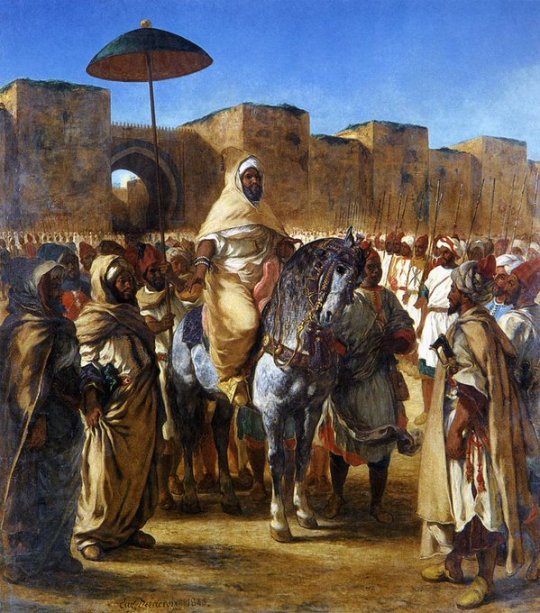
The Moors reintroduced mathematics, medicine, agriculture, and the physical sciences. Arabic figures including the zero and the decimal point replaced the clumsy Roman numerals. As Dr. Van Sertima says, "You can't do higher mathematics with Roman numerals." The Moors introduced agriculture to Europe including cotton, rice, sugar cane, dates, ginger, lemons, and strawberries. They also taught them how to store grain for up to 100 years and built underground grain silos. They established a world-famous silk industry in Spain. The Moorish achievement in hydraulic engineering was outstanding.
They constructed an aqueduct, that conveyed water from the mountains to the city through lead pipes from the mountains to the city. They taught them how to mine for minerals on a large scale, including copper, gold, silver, tin, lead, and aluminium. Spain soon became the world centre for high-quality sword blades and shields. Spain was eventually manufacturing up to 12,000 blades and shields per year. Spanish craft and woollen became world famous. The Moorish craftsman also produced world-class glass, pottery, vases, mosaics, and jewellery.
The Moors introduced to Europe paved, lighted streets with raised sidewalks for pedestrians, flanked by uninterrupted rows of buildings. Paved and lighted streets did not appear in London or Paris for centuries. They constructed thousands of public markets and mills in each city. Cordova alone had 5,000 of each. They were also introduced to Spain's underwear and bathing with soap. Their public baths numbered in the thousands when bathing in the rest of Europe was frowned upon as a diabolical custom to be avoided by all good Christians.
Poor hygiene contributed to the plagues in the rest of Europe. Moorish monarchs dwelled in sumptuous palaces while the crowned heads of England, France, and Germany lived in barns, lacking windows, toilets, and chimneys, with only a hole in the roof as the exit for smoke. Human waste material was thrown in the streets since no bathrooms were present. Education was made mandatory by the Moors, while 90% of Europe was illiterate, including the kings and queens. The Moors introduced public libraries to Europe with 600,000 books in Cordova alone. They established 17 outstanding universities in Spain.
Since Africa is a matriarchal society, women were also encouraged to devote themselves to serious study, and it was only in Spain that one could find female doctors, lawyers, and scientists. Moorish schoolteachers knew that the world was round and taught geography from a globe. They produced expert maps with all sea and land routes accurately located concerning latitude and longitude; while also introducing compasses to Europe.
They were such expert shipbuilders that they were able to use their geography expertise to import and export as far away as India and China. It was not by accident that a Moor named Pietro Olonzo Nino was the chief navigator for Christopher Columbus on the flagship Santa Maria.
He is said to have argued with Columbus as to who really discovered America. One of the worst mistakes the Moors made was to introduce gunpowder technology from China into Europe because their enemies adopted this weapon and used it to drive them out of Spain.
Europe then took the 700 years of civilization and education re-taught to them by the Moors and used this knowledge to attack Africa. While the Moors were re-civilizing Europe, great empires were thriving in Western Africa and frequently traded with the Moors.
These included the empires of Ghana, Mali, and Songhay, which prospered between 700 AD and 1600 AD. Africa was not a dark continent awaiting European civilization. In fact, Black African Egyptians and Black African Moors are credited with civilizing Europe."
19 notes
·
View notes
Text

John Tenniel 1861
"They came - his Chieftains at the call Came slowly round, and with them all Alas, how few! the worn remains Of those who late o'er Kerman's plains Went gaily prancing to the clash Of Moorish zel and tymbalon, Catching new hope from every flash Of their long lances in the sun, And, as their coursers charg'd the wind, And the white ox-tails stream'd behind, Looking, as if the steeds they rode Were wing'd, and every Chief a God ! How fallen, how alter'd now ! How wan Each scarr'd and faded visage shone, As round the burning shrine they came ! - How deadly was the glare it cast, As mute they pass'd before the flame To light their torches as they pass'd ! 'Twas silence all - the youth had plann'd The duties of his soldier-band ; And each determin'd brow declares His faithful Chieftains well know theirs."
from Lalla Rookh Thomas Moore 1861
0 notes
Video
youtube
Eduard Charlemont's "The Moorish Chief"
0 notes